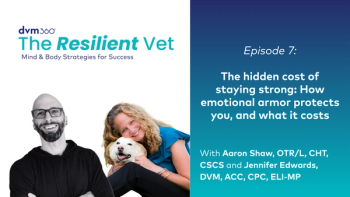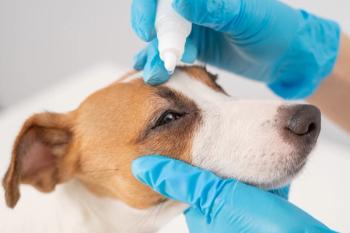
AAVMC eyes national recruitment strategy
Washington - Applicant numbers are dwindling, entire jobs sectors are suffering and diversity, whether racial-, ethnic- or gender-related, is off kilter.
WASHINGTON — Applicant numbers are dwindling, entire jobs sectors are suffering and diversity, whether racial-, ethnic- or gender-related, is off kilter.
The largely white, increasingly female and small-animal focused veterinary profession needs an academic recruitment strategy to fill underserved markets if the profession is to remain viable, leaders with the Association of American Veterinary Medical Colleges (AAVMC) say. The days when a variety of qualified applications poured into veterinary colleges are gone, they add. So to regain balance, organized veterinary medicine now turns to a consulting firm on its quest to build a more diverse pool of student applicants.
The goal aims for "big results" within eight years, based on quick, effective implementation of yet-to-be-realized comprehensive recruitment plan. By all accounts, the project is vast, with four phases to be played out in roughly 18 months. By 2008, AAVMC hopes to have conducted two major surveys, one focused on market analysis of at least 10,000 applicants and potential applicants qualified for veterinary medicine. The other will go to academic advisers, "the portal to the profession," assessing their knowledge and perception about veterinary medicine. Stage three assesses current recruitment tactics and centralizes efforts to drive the applicant pool in line with public demands while the final phase includes developing the highly anticipated final plans.
"This is a monumental shift in our culture," says John Roane, AAVMC chief operating officer. "There didn't seem to be a need for recruitment strategy in the past. Now there are factors pulling us in this direction, such as workforce shortages and emerging needs in public health, biosafety and the growing demands of the U.S. population."
Dwindling numbers
To execute the initiative, AAVMC turns to Cedar Rapids, Iowa-based Stamat Inc., a firm that specializes in branding, research and advertising to help academic institutions achieve various marketing objectives.
Consultant Eric Sickler considers it a misnomer to peg the project as an answer to the profession's lack of diversity.
"It certainly plays a major role, and we're talking beyond just racial diversity to include geographic, ethnographic, skills and preparation," he says. "But what we really want to see is a wider and larger pool of candidates. Applications are on the decline, which has member institutions concerned."
AAVMC Executive Director Dr. Larry Heider puts the issue in perspective. The organization, acting as a clearinghouse for all veterinary applicants, reports 5,400 applications received last year for the nation's 2,600 veterinary institution seats. While that's more than double the number of slots, Heider insists that anecdotal reports reveal a lack of qualified candidates and a slowdown in interest from previous years.
"The applications are not rising with the increase in seats," he says, noting that AAVMC has only been collecting applicant pool statistics for seven years. "You have to recognize that our data doesn't go back very far," he adds.
Roane suggests that sagging numbers not only reflect application totals, but composition. The unequal distribution of men and women is an issue, he says. "In the past there wasn't a big need to focus on this because there were so many applicants. We're concerned about the work arena as well as ethnic and racial diversity. We are concerned about the feminism of the profession. No one has determined the impact."
In the trenches
The increase of women in the profession has been well documented, reporting 80 percent of the nation's veterinary students are female with new graduates tilting the historically male-dominated gender balance to 50 percent in recent years.
That makes any move to strengthen the diversity of veterinary medicine's application pool important, says Dr. Michael Blackwell, University of Tennessee's veterinary college dean. DVM expertise in public health, biosecurity and government arenas remain largely underserved, with the United States Department of Agriculture reporting hundreds of job openings in upcoming years.
"I don't think we've educated the public about who we are or what we do. What has resulted is the public that only sees a wonderful image as pet doctors," he says. "We haven't done a good job of exposing other careers with respect to public practice, research and food animal medicine."
To alter the inequity locally, Blackwell refuses to wait around for association assistance. Last year, admissions officials identified its pool of qualified candidates. From there, the team sought to meet certain target areas, which skewed the student body's traditional demographics.
"Our class of 2010 that we just admitted is the most diverse class in the history of the college," Blackwell says. "We got there not by accident but by action on the part of the college especially during the admissions stage. We still have a way to go, but this is a banner year. We have four black students in one class. It's 73 percent female instead of the 80 percent we've been running for years, and we've made sure we have students interested in research, food animal medicine and public health."
Slowly but surely
While that might seem like a slight change, it's a precursor to bigger transformation. And other institutions appear to be echoing Tennessee's efforts. According to AAVMC, which tracks student demographics, last year's national veterinary student body represented minorities by 10 percent.
Although the numbers did not reveal an equal distribution of men and women, that disparity also seemed to ease. "Probably 74 percent were white women," Heider says.
Compelled to act
The shift will continue once AAVMC gathers more than just anecdotal information, Roane contends, adding that lasting change depends on altering attitudes about veterinary medicine and drawing people to the field.
"There are common misconceptions about veterinary medicine," he says. "One is 'I don't want to go to vet school because I don't like working with reptiles.' You can see how this perception can paralyze opportunities for people to apply. We need to get the correct information out there. We don't want a belief like this to sting the profession."
Newsletter
From exam room tips to practice management insights, get trusted veterinary news delivered straight to your inbox—subscribe to dvm360.




